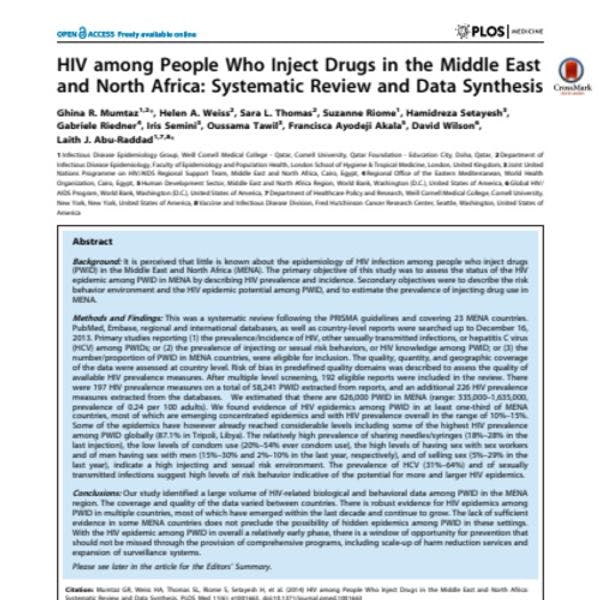HIV among People Who Inject Drugs in the Middle East and North Africa
About 35 million people worldwide are currently infected with HIV, the virus that causes AIDS, and around 2.3 million people become newly infected every year. HIV is mainly transmitted through unprotected sex with an infected partner. However, people who inject drugs (PWID) have a particularly high risk of HIV infection because blood transfer through needle and syringe sharing can transmit the virus.
To maximize the effect of these harm-reduction strategies in specific regions, it is important to understand the status of the HIV epidemic among PWID. Although surveillance systems provide the information on HIV infection needed to track the progress of HIV epidemics among PWID in many regions, it is perceived that little is known about the epidemiology of HIV infection among people who inject drugs (PWID) in the Middle East and North Africa (MENA).
Several factors contribute to the likelihood of individuals injecting drugs in MENA. For example, Afghanistan (a MENA country) produces most of the world's supply of heroin, which is largely trafficked through Iran and Pakistan (also MENA countries).
The primary objective of this study was to assess the status of the HIV epidemic among PWID in MENA by describing HIV prevalence and incidence. Secondary objectives were to describe the risk behavior environment and the HIV epidemic potential among PWID, and to estimate the prevalence of injecting drug use in MENA.
Keep up-to-date with drug policy developments by subscribing to the IDPC Monthly Alert.
